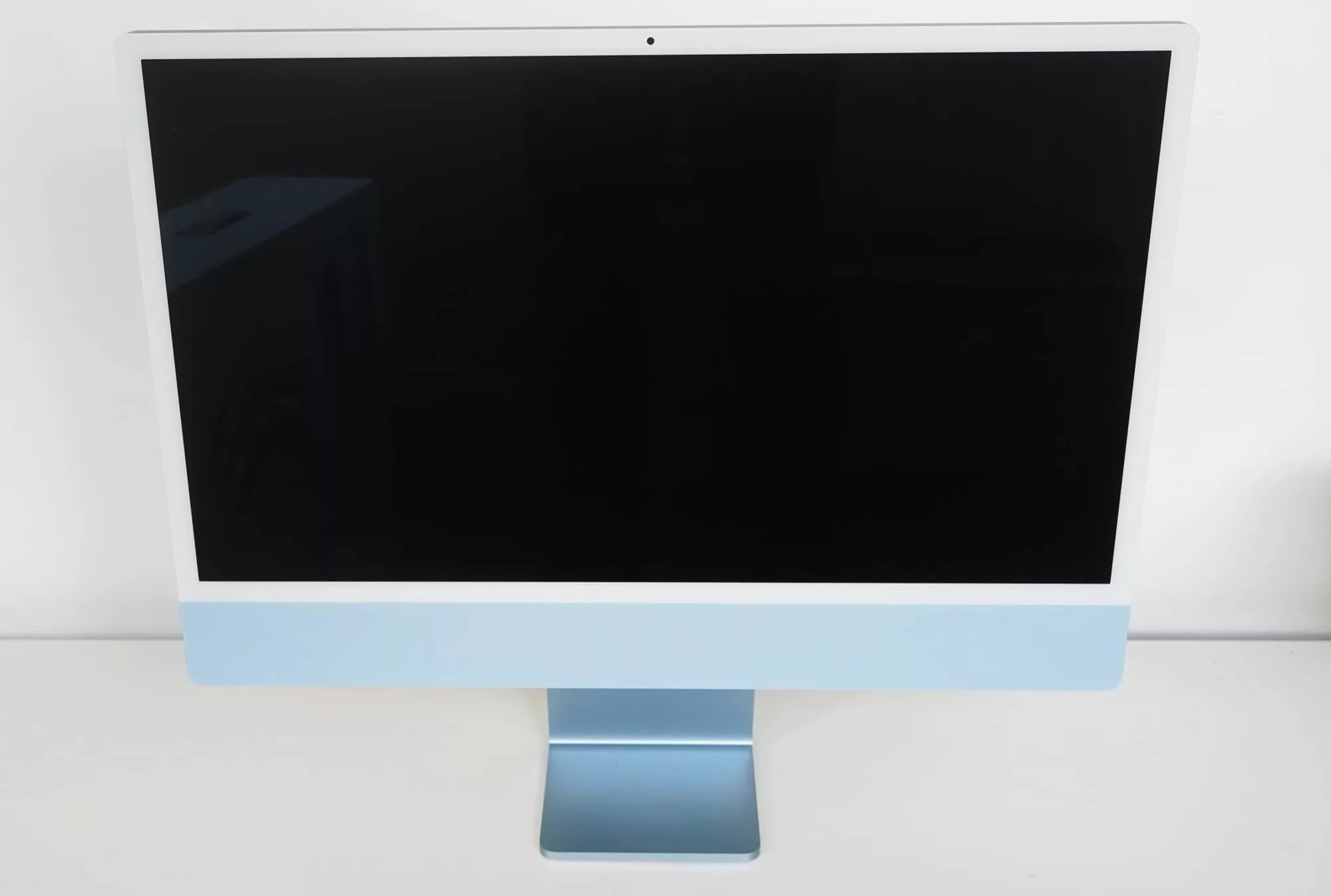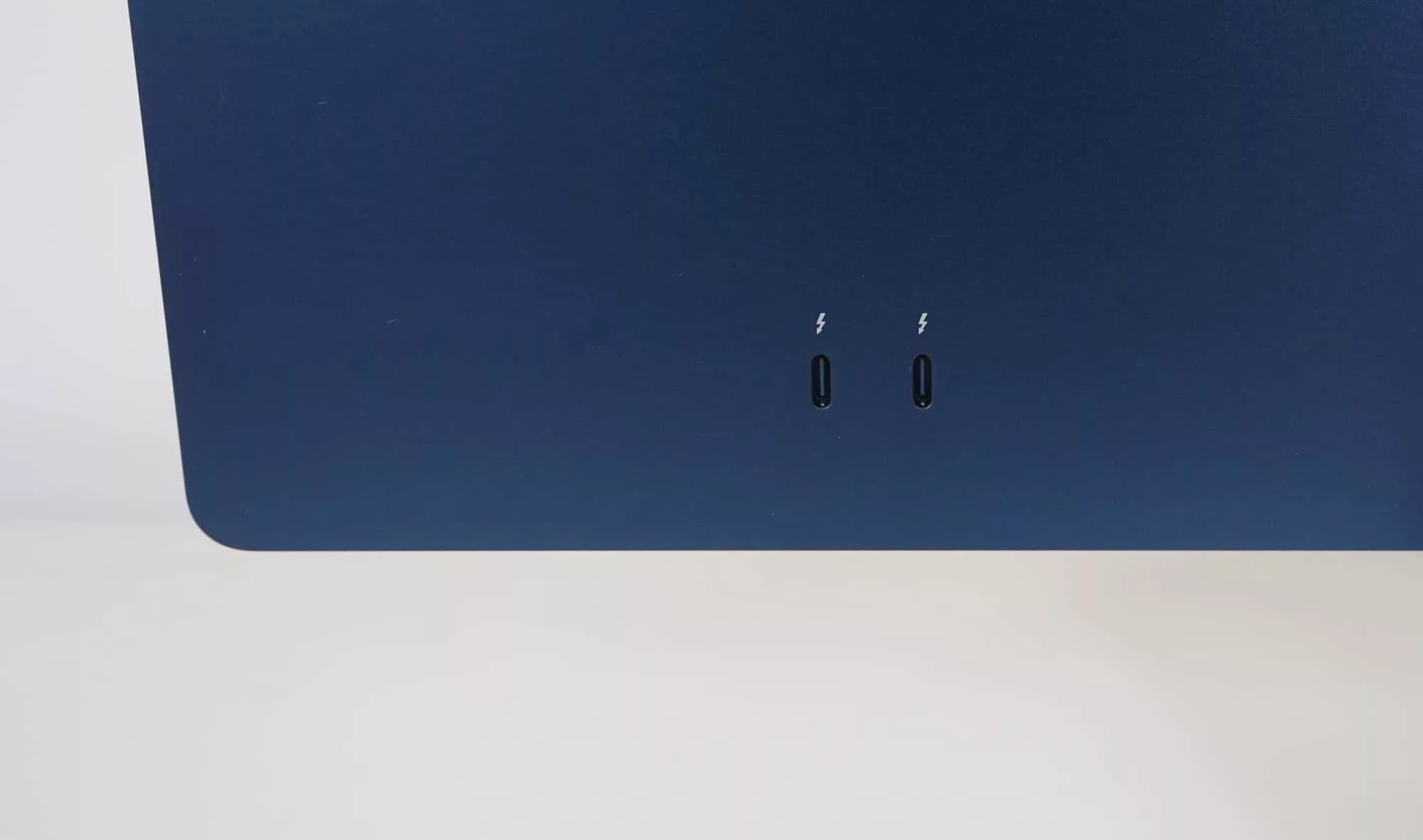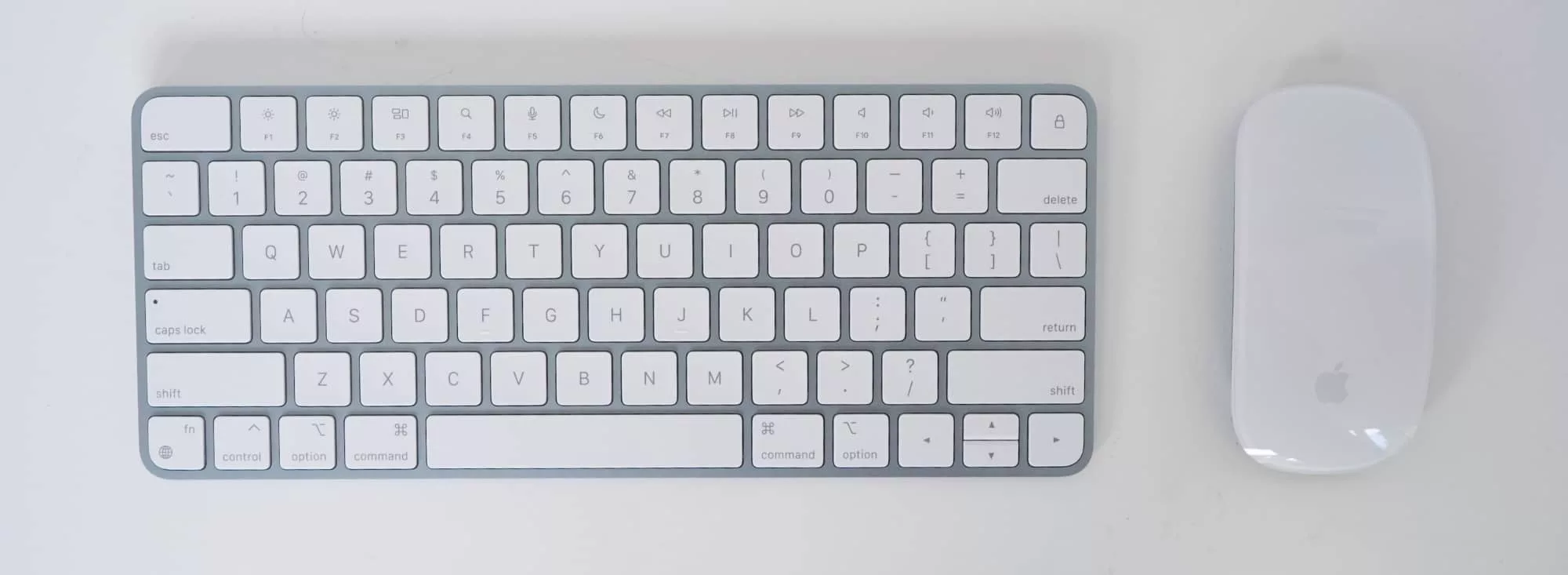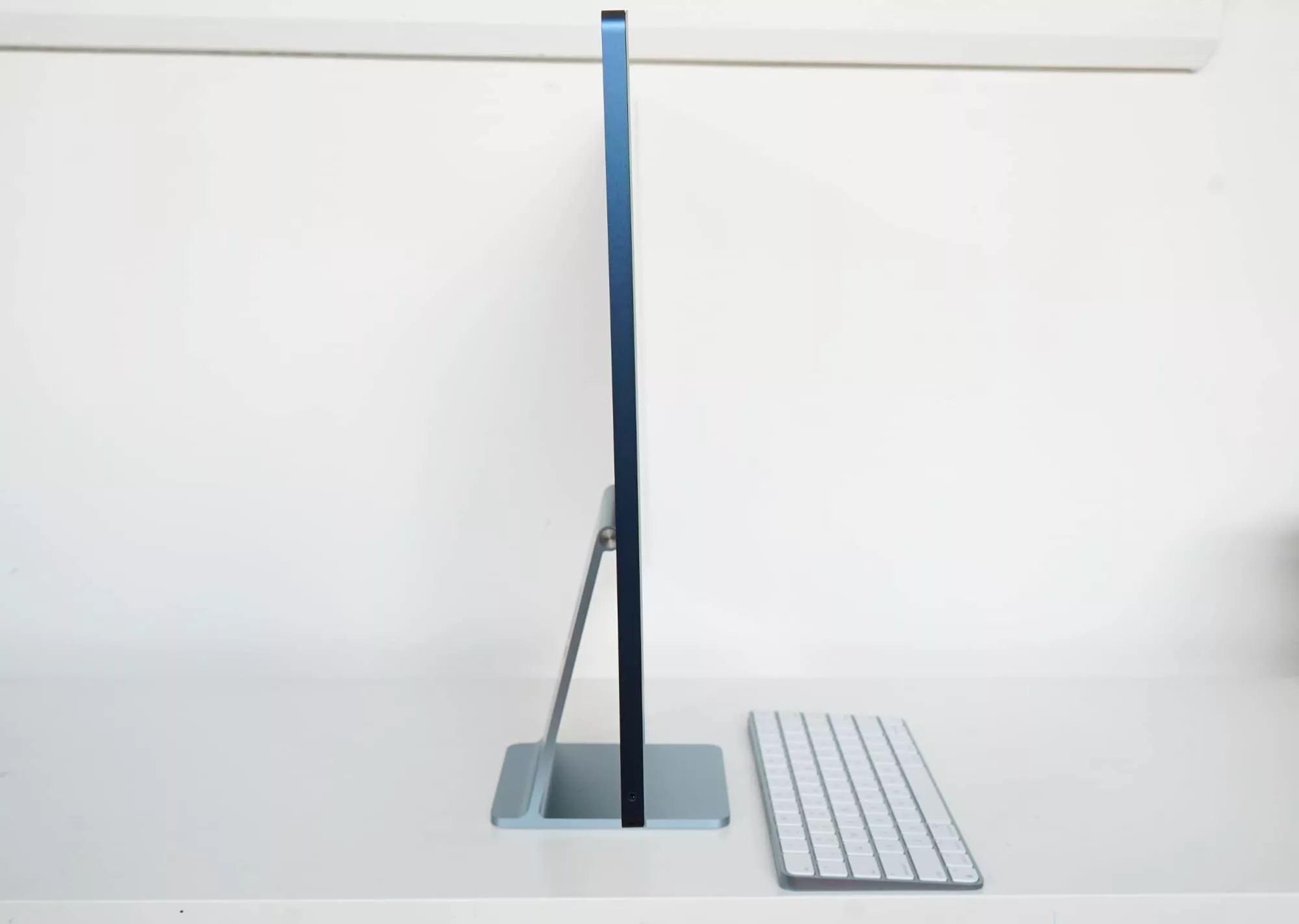Quick review
The good
The not-so-good
Laptops may make most of what you can find in computers, but they’re not for everyone. If you prefer to sit at a desk, the M3 iMac is one beautiful system.
Portable computing has largely become the norm for so many of us, it’s easy to forget the desktop still exists. Oh sure, we take our laptops and plug them into monitors, docks, and port replicators at a desk, especially if we’re still working from home or doing school work, but there’s a whole group of people who still prefer a desktop.
A different class of machines entirely, desktops often deliver lots of power in a small size, and may even provide a more value-driven price, at that.
The iMac isn’t quite that machine, but it does bring together what some desktop users are after: a great all-rounder package that gives you everything you need and nothing you don’t.
In its most recent incarnation, we saw that coupled with a colourful new design, as Apple made its iMac easier to choose from, ditching a choice of either a 21 or 27 inch desktop, and making it just about a 24 inch computer made for today.
That was back in 2021, and two years later, Apple updated the iMac with a new chip, the M3 Apple Silicon.
Before WWDC hits this year, we’re reviewing just that to find out whether the iMac stands up in today’s world where laptops rule.

Design
In 2024, we’re looking at a machine released last year with a size convenient for the year we’re in. At 24 inches, the iMac presently offers a display matched for the year. It didn’t at launch and it does now.
Moving on from the numberwang randomly coincidental uses of numbers represent, this iMac is exactly like the last, which means you get a colourful aluminium design encasing system, screen, and stand.
It’s a design that still looks lovely, particularly when it’s on a desk, which is exactly where it’s made to go.
Features

Our blue iMac looked swanky, even if it’s the entry-level model sporting only two Type C Thunderbolt and USB 4 ports, both of which work on the same port.
There are no extra USB ports on the side here, but there is a 3.5mm headset jack on the left edge of the screen, as well as a FaceTime HD camera, three mics, six speakers and support for spatial audio with the right app or service, such as Dolby Atmos on Apple Music.
Inside, you’ll find Apple’s 8-core CPU and either an 8- or 10-core graphics chip (GPU), a choice entirely dependent on how much you spend. You won’t find the M3 Pro or M3 Max here — those are entirely for the MacBook Pro range — but you’ll still get much the same tech as in other M3-models, including a 16-core Neural Engine (because every Apple Silicon Mac is technically an AI PC), 256GB SSD, 8GB RAM, Bluetooth 5.3, and support for WiFi 6E.

Display
The other main feature of the iMac is the screen, and while Apple hasn’t changed anything about the 24 inch display the previous model came with, it’s still a lovely display.
A big bright screen encased by a white frame that could be a little slimmer, truth be told, but is otherwise very pleasing. It’s almost like a picture frame to a different world. Your world, specifically, and with macOS Sonoma’s live wallpaper choices borrowing from Apple TV’s landscapes, it looks like a portal to another world.
Technically, there’s a 4.5K-friendly screen resolution of 4480×2520 in the 24 inch iMac with support for one billion colours and the P3 colour gamut, plus the ability to match the level of white of the room thanks to Apple’s True Tone technology.
You’ll never have to worry about peeping pixels on this display, either, because when viewed a slight distance, the 4K screen looks sharp as a tack. Apple rates the display roughly 218 pixels per inch, but you just need to know it’s sharp, clear, and easy on the eyes.

In-use
As usual, using the iMac is pretty much like using any other Mac, or even any other computer, too.
You get a keyboard and mouse, as Apple’s Magic Mouse makes its return in our lives, though not necessarily for the better. We’re still not big fans of this mouse, but fortunately you can grab any other mouse and use it, such as Logitech’s MX Master or even an Apple Magic Trackpad. We used the latter.
One thing our entry-level iMac didn’t get was the keyboard with the Touch ID key, meaning we couldn’t log in using our fingerprint. It’s a minor inconvenience, something we’ve grown to love over time, but it can be replaced with an optional extra, Apple’s Mac Keyboard with Touch ID.
You won’t get it in the same shade your iMac comes in unless it’s black or white, though; the blue keyboard with our blue M3 iMac is specific to what’s in the box. If you want Touch ID, you need to fork out for the more expensive model, which comes with the blue Touch ID keyboard standard.

If you don’t opt for the more expensive iMac, you’ll also find only two Type C ports for you to work with. That’s a little like the MacBook Air, so much like the keyboard, it’s a minor inconvenience, especially if you don’t plug much in.
You need to plug in your keyboard and mouse to get started, to pair the devices with your Mac, but other than that, it’s largely a wireless experience. There are six speakers in the Mac for listening out loud a 3.5mm headphone jack on the left edge, and just the two USB ports on the back.
It’s a delightfully minimalist Mac. It won’t be for everyone, but we can see some folks really getting behind what’s on offer, and even what isn’t.
Performance
And what’s on offer aside for the lack of ports? Performance. Performance aplenty.
Armed with Apple’s M3 inside, you shouldn’t expect this to be a slouch in any means, and it’s a sizeable upgrade to the last Apple Silicon chip the iMac shipped with.
Granted, it’s not the same version of the M3 we reviewed in the MacBook Pro, and our entry-level iMac relied on the 8-core GPU version, distinct from the 10-core in the more expensive models. Even with that caveat, the M3 iMac delivers a solid performance able to best and beat plenty of other machines out there.
Compared to the older iMac, there’s an obvious speed boost in pretty much every area, giving you a guide that this desktop will stand the test of time, provided that test is several years.
Going a little further, while the M3 iMac doesn’t quite hold a candle to the more powerful M3 Max edition of the chip, it can hold its own to more pro-level hardware released by Apple in recent years.
That’s not a bad outcome at all for a machine mostly geared at consumers. Granted, it’s basically the same as the M3 MacBook Air, but it should bode well for longevity.
Value
The price, however, feels a little off the mark, largely because you’re essentially paying $400 more for a MacBook Air with a bigger screen, plus a keyboard that lacks the fingerprint sensor, something every MacBook Air comes with.
That’s an optional extra for the $2199 base model M3 iMac, but an optional extra cost of $209 if you buy it after the fact, or $2499 if you get the slightly more capable M3 iMac with a 10-core GPU and the fingerprint-ready keyboard already bundled in.
At $2499, the four-port M3 iMac feels like the better deal, simply because you get more ports, a better keyboard, a Gigabit Ethernet port, and a more impressive chip. You also get more choices of colours, with the base 8-core GPU model only getting blue, green, pink, and silver. The 10-core GPU M3 iMac expands on blue, green, pink, and silver, with yellow, orange, and purple.
We’re still a little uneasy about the value on the 10-core M3 iMac, but it makes more sense than the base model, which feels like it should be under $2K rather than just over it.

What needs work?
Aside for that price and a lack of Touch ID on the keyboard, there’s very little to complain about with the M3 iMac.
Like the M1 model before it, Apple has built a lovely machine that matches the company’s ethos of brilliant industrial design and equally impressive hardware.
We wish Apple would include an SD card slot, but that’s a problem for the entire range of iMacs. The only machines with an SD slot are the MacBook Pro and Mac Studio, so this isn’t something Apple believes the iMac still needs.
What we loved
Despite the slot omission, there are aspects of the M3 iMac we just adore. The design is one, sure, but the sound is on another level, especially compared to most computers.
Take the Mac Studio: it’s a great desktop with no screen and fairly unimpressive speakers.
In contrast, the iMac sounds amazing. It sounds amazing compared with a lot of computers, thanks in part to the six speaker system. It’s a level of sound that comes off as being bigger than what you’d expect.
Experienced with Apple Music’s Dolby Atmos tracks, you hear an almost larger than life level of audio that sounds about as good as having a pair of HomePods on your desk. They can’t go quite as loud, but no joke, there were times we just tuned into tracks and let the iMac do its thing, delivering spatial sound around our office.

Final thoughts (TLDR)
The all-in-one desktop market isn’t what it used to be, and laptops are the likely culprit, but the iMac remains a solid option for folks who want a desktop. Specifically, it’s a computer that can remain on a desk for years to come, keep on being used, and look good doing so.
There aren’t many machines that fit that bill and do everything well, but the iMac is certainly that. It’s a desktop that delivers.
We’d opt for the slightly better model if you had a choice, as the base model doesn’t quite nail the value in a way you’d expect — being less expensive doesn’t automatically make for a better value — but there’s definitely a great computer here.







